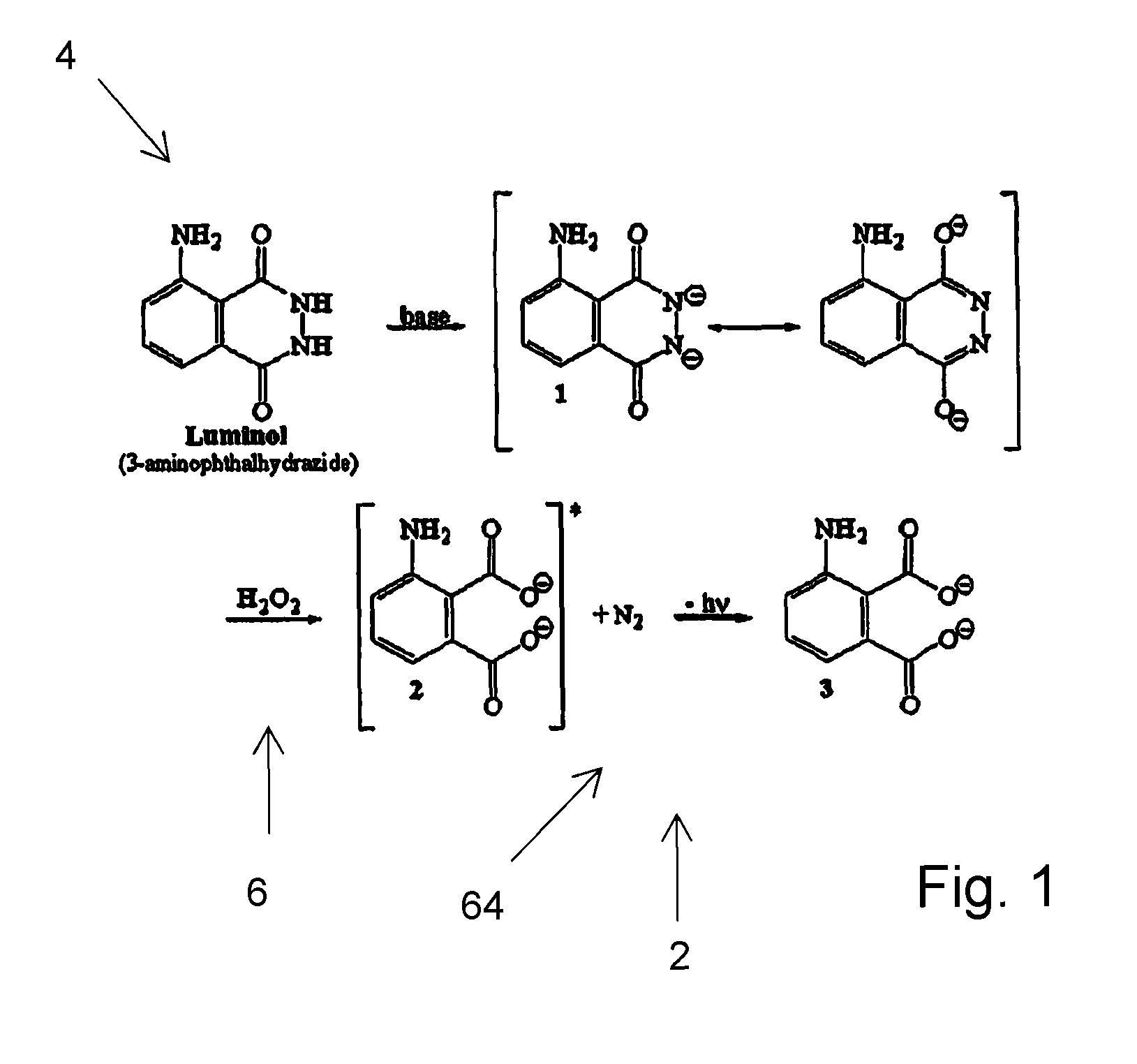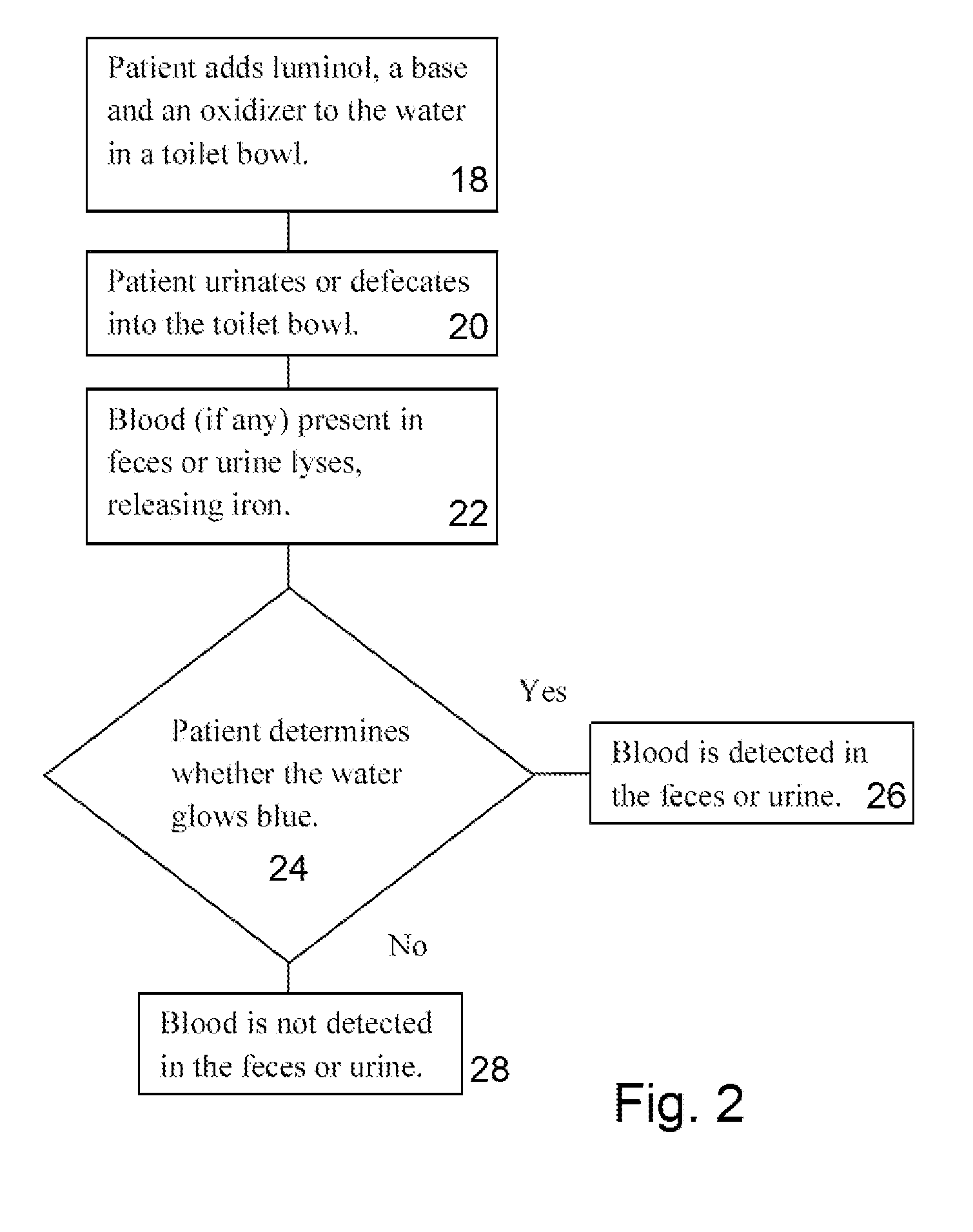Apparatus and method for the remote sensing of blood in human feces and urine
a technology of remote sensing and urine, which is applied in the direction of luminescent dosimeters, optical radiation measurement, fluorescence/phosphorescence, etc., can solve the problems of poor compliance with current screening recommendations and procedures, low participation rate in crc screening especially, lack of awareness, etc., to achieve safe and inexpensive, facilitate patient compliance, and facilitate use. privacy
- Summary
- Abstract
- Description
- Claims
- Application Information
AI Technical Summary
Benefits of technology
Problems solved by technology
Method used
Image
Examples
Embodiment Construction
[0053]The method and apparatus is for the screening of feces and urine for blood in a toilet bowl 10. As shown by FIG. 1, the apparatus and method of the invention utilize the reaction 2 of luminol 4 with an oxidizer 6 in alkaline conditions in water 8 in a toilet bowl 10. In the diagram of FIG. 1, the oxidizer 6 is hydrogen peroxide; however, several different oxidizers 6 are suitable, as described above. The alkaline conditions are achieved in the water8 in the toilet bowl 10 by the addition of a base 12, such as sodium borate. Other bases 12 also are suitable to achieve the needed alkaline conditions. The reaction between the luminol 4 and the oxidizer 6 is slow unless the reaction is catalyzed, as by the iron 14 contained within the hemoglobin in red blood cells. The reaction is rapid in adequately basic conditions and in the presence of iron 14, resulting in the characteristic blue glow of light 16 from the reacting luminol 4 in the presence of blood.
[0054]The simplest form of ...
PUM
| Property | Measurement | Unit |
|---|---|---|
| wavelengths | aaaaa | aaaaa |
| molar concentration | aaaaa | aaaaa |
| molar concentration | aaaaa | aaaaa |
Abstract
Description
Claims
Application Information
 Login to View More
Login to View More - R&D
- Intellectual Property
- Life Sciences
- Materials
- Tech Scout
- Unparalleled Data Quality
- Higher Quality Content
- 60% Fewer Hallucinations
Browse by: Latest US Patents, China's latest patents, Technical Efficacy Thesaurus, Application Domain, Technology Topic, Popular Technical Reports.
© 2025 PatSnap. All rights reserved.Legal|Privacy policy|Modern Slavery Act Transparency Statement|Sitemap|About US| Contact US: help@patsnap.com



